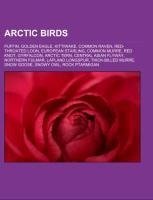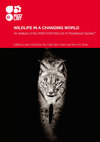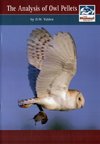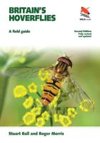
Arctic birds
Source: Wikipedia. Pages: 64. Chapters: Puffin, Golden Eagle, Kittiwake, Common Raven, Red-throated Loon, European Starling, Common Murre, Red Knot, Gyrfalcon, Arctic Tern, Central Asian Flyway, Northern Fulmar, Lapland Longspur, Thick-billed Murre, Snow... Viac o knihe
Produkt je dočasne nedostupný
17.78 €
bežná cena: 20.20 €
O knihe
Source: Wikipedia. Pages: 64. Chapters: Puffin, Golden Eagle, Kittiwake, Common Raven, Red-throated Loon, European Starling, Common Murre, Red Knot, Gyrfalcon, Arctic Tern, Central Asian Flyway, Northern Fulmar, Lapland Longspur, Thick-billed Murre, Snow Goose, Snowy Owl, Rock Ptarmigan, Barnacle Goose, List of birds of Nunavut, Yellow-billed Loon, Ivory Gull, Flora and fauna of Greenland, Grey Heron, Grey Plover, Dunlin, Black-legged Kittiwake, American Golden Plover, Sabine's Gull, Little Auk, Red Phalarope, Parasitic Jaeger, Buff-breasted Sandpiper, Uria, White-rumped Sandpiper, Glaucous Gull, Least Auklet, Ross's Gull, Baird's Sandpiper, Red-legged Kittiwake, Crested Auklet, Arctic Warbler. Excerpt: The Common Raven (Corvus corax), also known as the Northern Raven, is a large, all-black passerine bird. Found across the northern hemisphere, it is the most widely distributed of all corvids. There are at least eight subspecies with little variation in appearance- although recent research has demonstrated significant genetic differences among populations from various regions. It is one of the two largest corvids, alongside the Thick-billed Raven, and is possibly the heaviest passerine bird; at maturity, the Common Raven averages 63 cm (25 inches) in length and 1.2 kg (2.6 pounds). Common Ravens typically live about 10 to 15 years in the wild, although lifespans of up to 40 years have been recorded. Young birds may travel in flocks, but later mate for life, with each mated pair defending a territory. The Common Raven has coexisted with humans for thousands of years and in some areas has been so numerous that it is considered a pest. Part of its success comes from its omnivorous diet; Common Ravens are extremely versatile and opportunistic in finding sources of nutrition, feeding on carrion, insects, cereal grains, berries, fruit, small animals, and food waste. Some remarkable feats of problem-solving have been observed in the species, leading to the belief that it is highly intelligent. Over the centuries, it has been the subject of mythology, folklore, art, and literature. In many indigenous cultures, including those of Scandinavia, ancient Ireland and Wales, Bhutan, the northwest coast of North America, and Siberia and northeast Asia, the Common Raven has been revered as a spiritual figure or god. The Common Raven was one of the many species originally described by Linnaeus in his 18th century work, Systema Naturae, and it still bears its original name of Corvus corax. It is the type species of the genus Corvus, derived from the Latin for "Raven". The specific epithet, corax/¿¿¿a¿, is the Ancient Greek word for "raven" or "crow". The name "raven" has been applied
- Vydavateľstvo: Books LLC, Reference Series
- Formát: Paperback
- Jazyk:
- ISBN: 9781156822449


 Anglický jazyk
Anglický jazyk 









